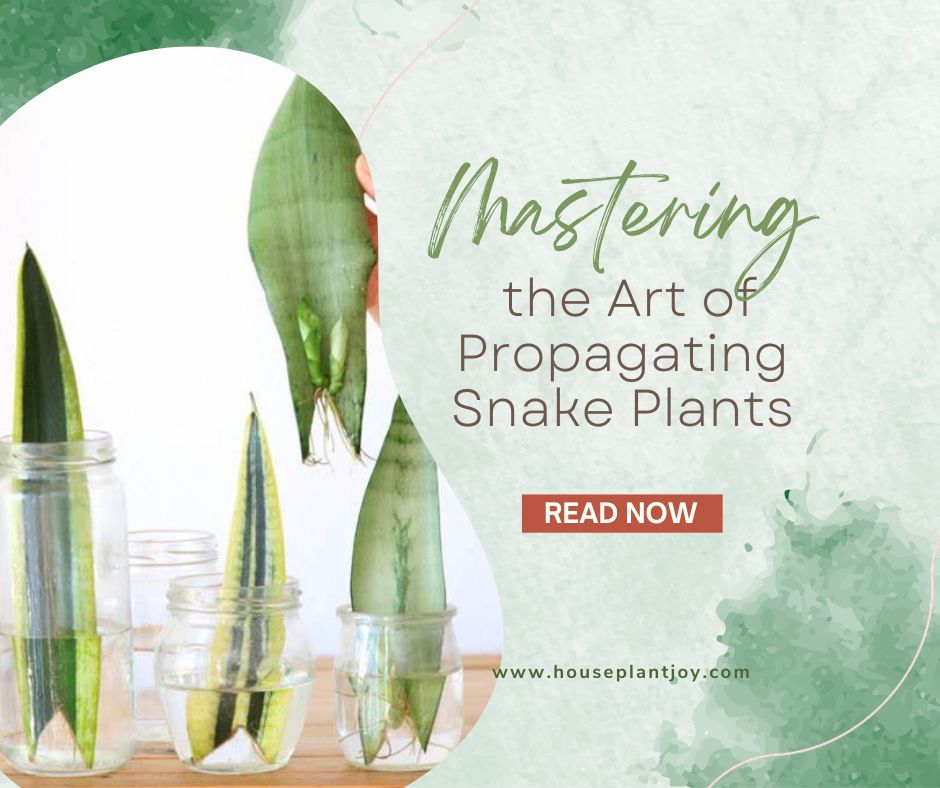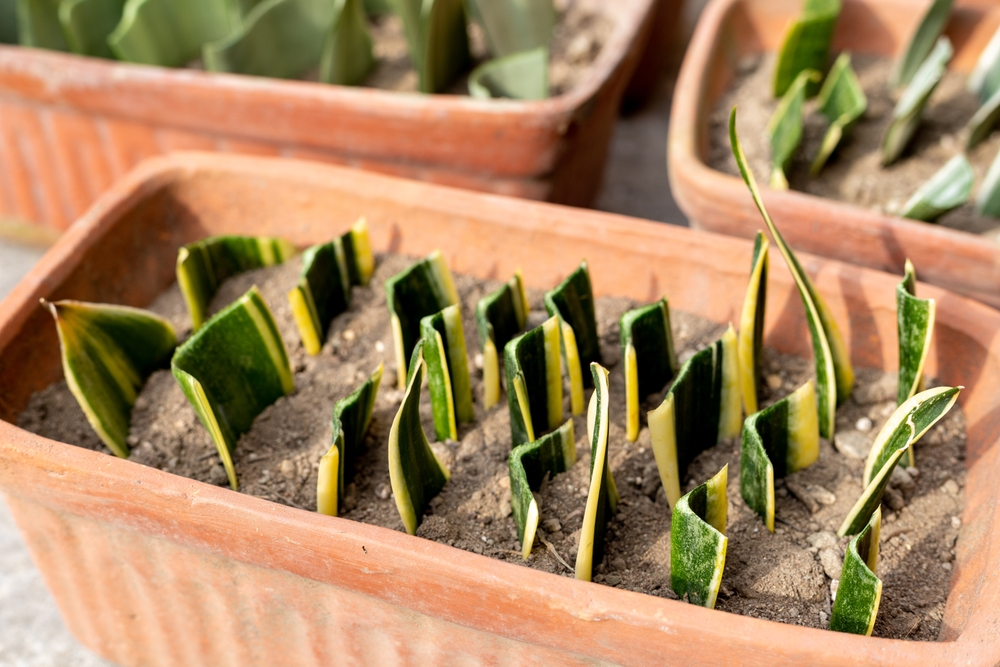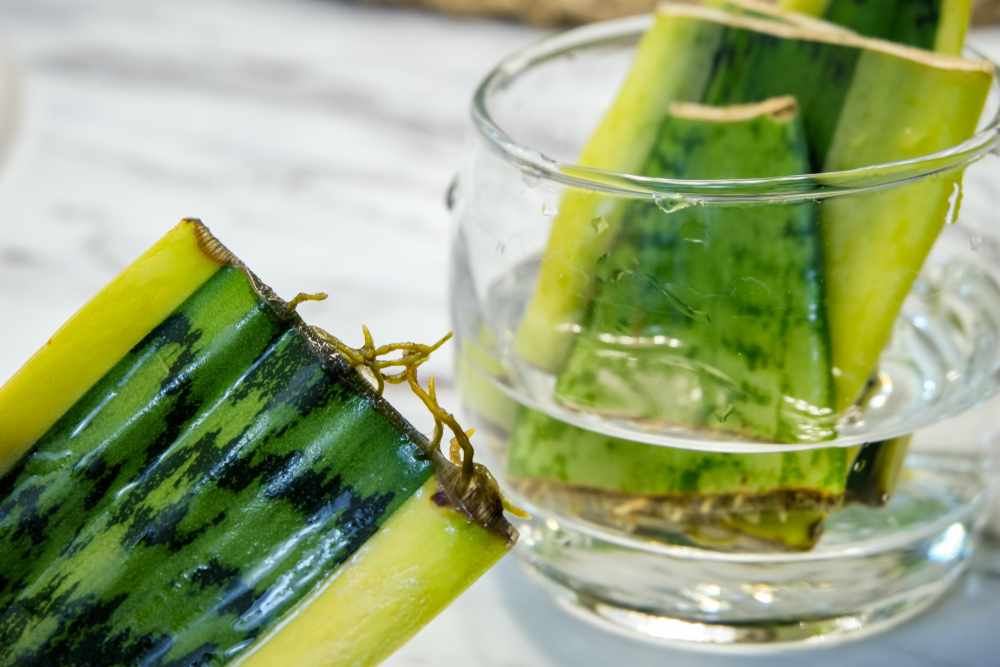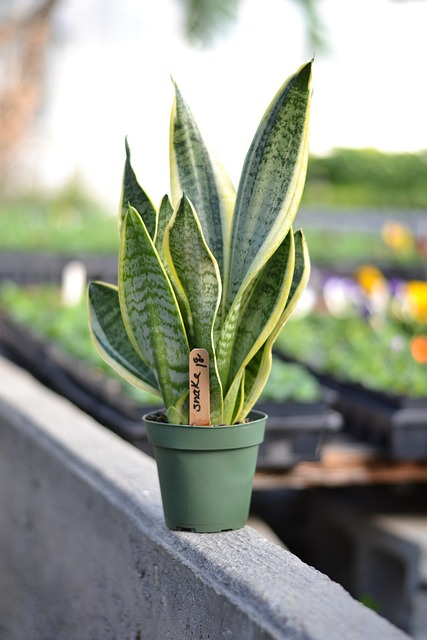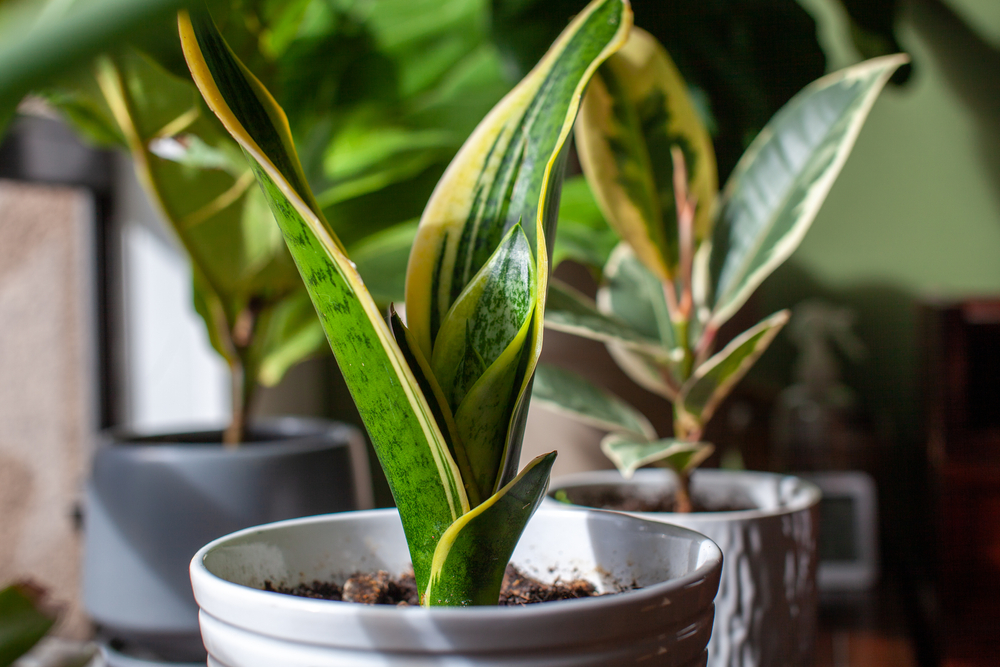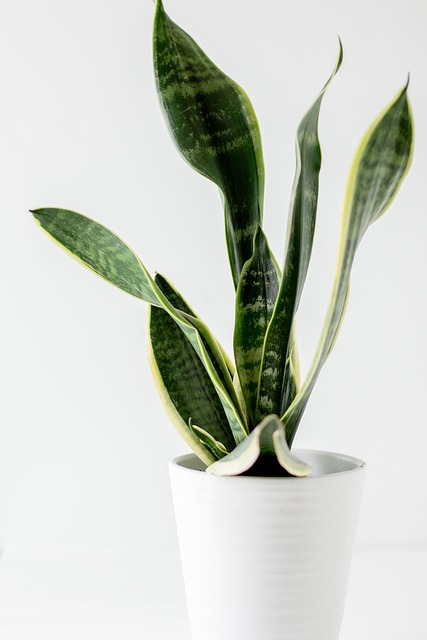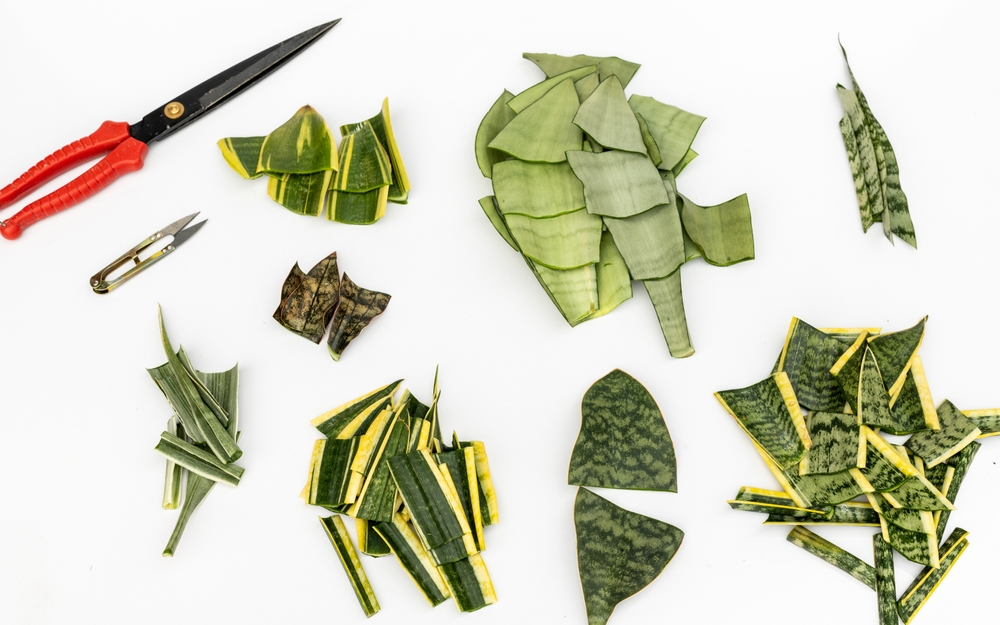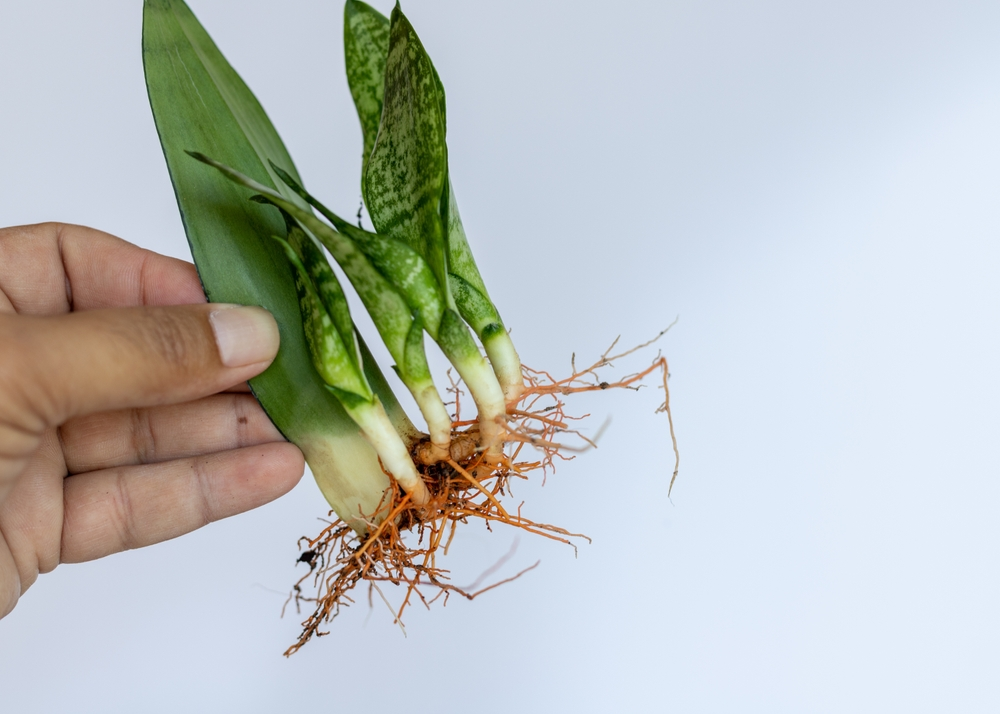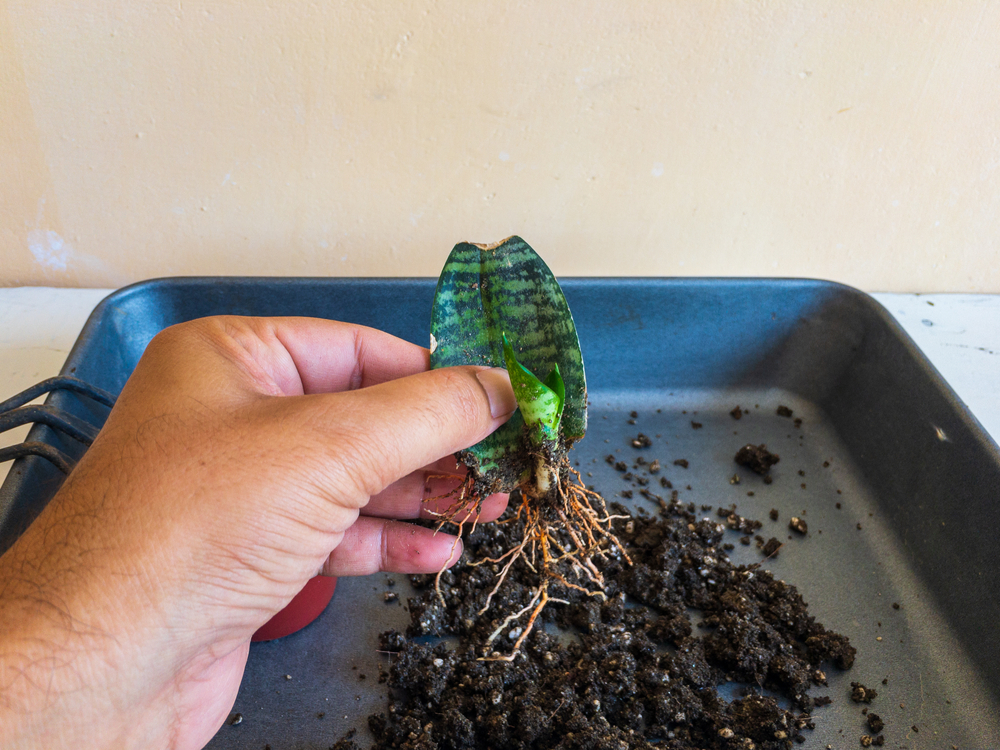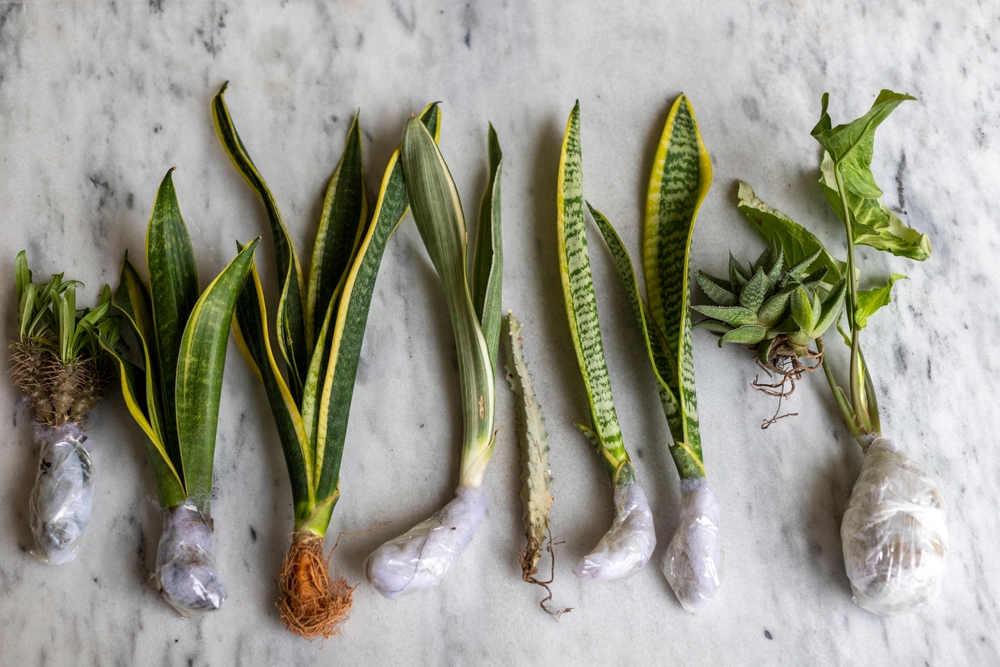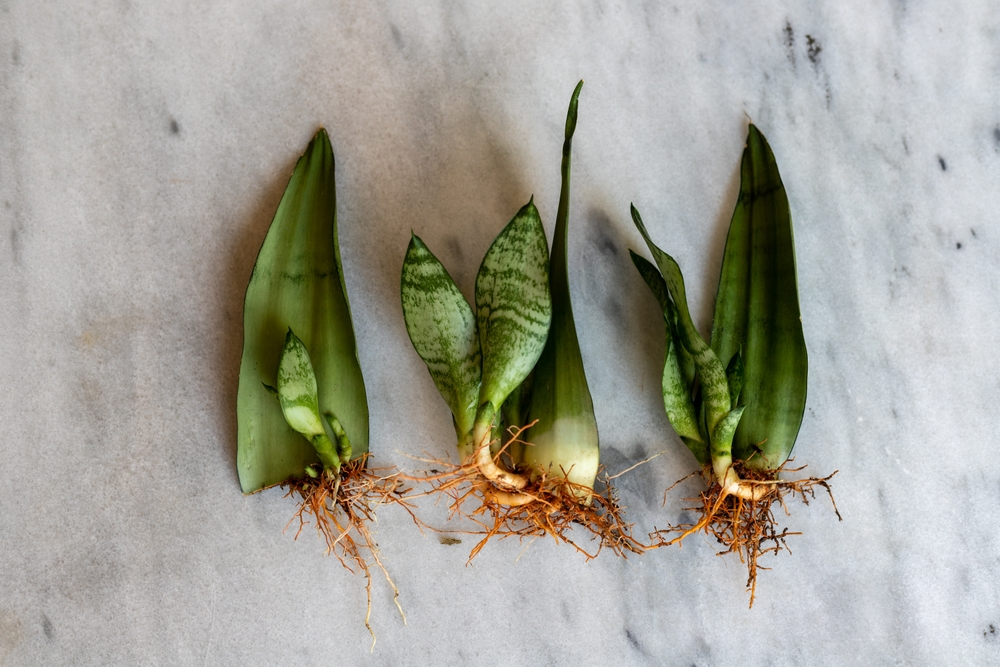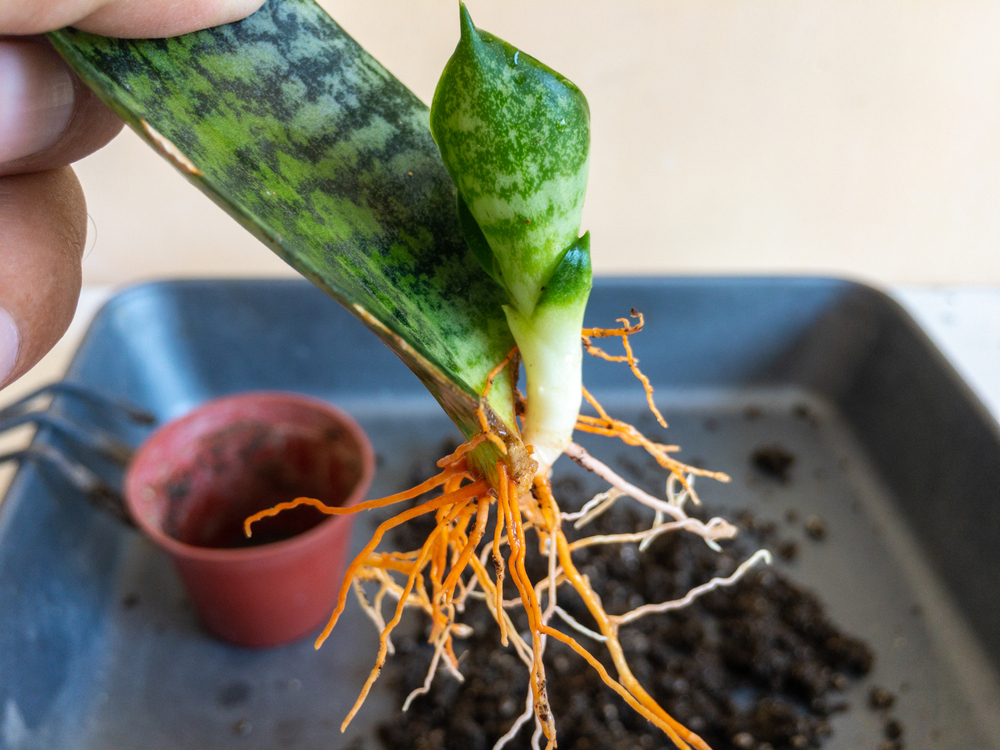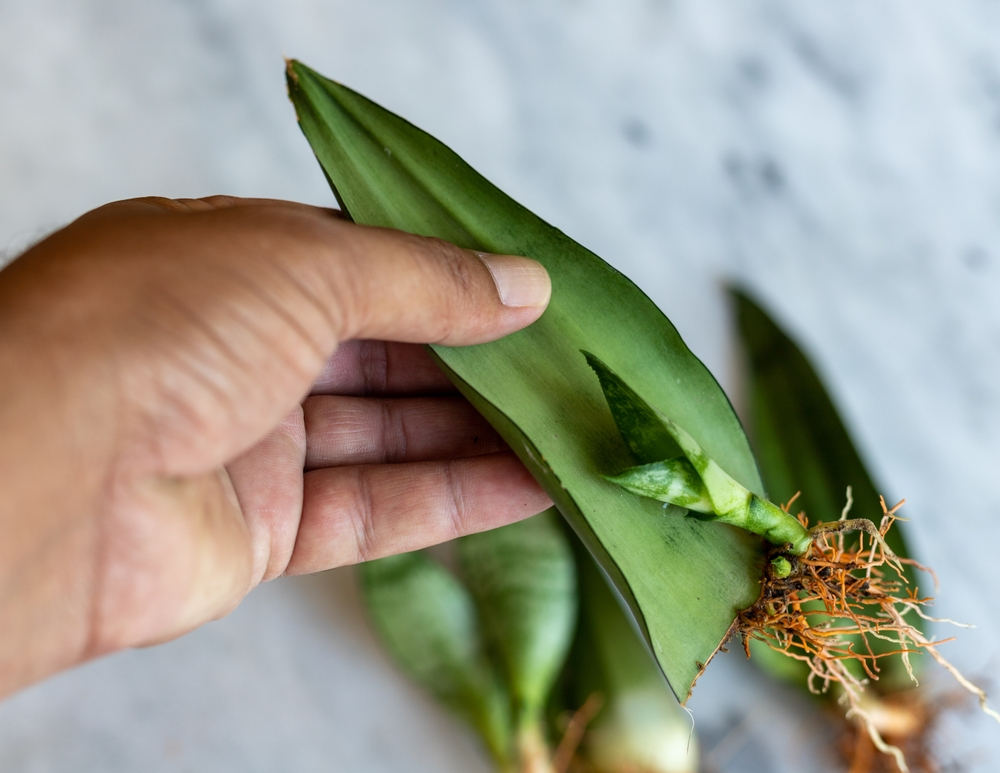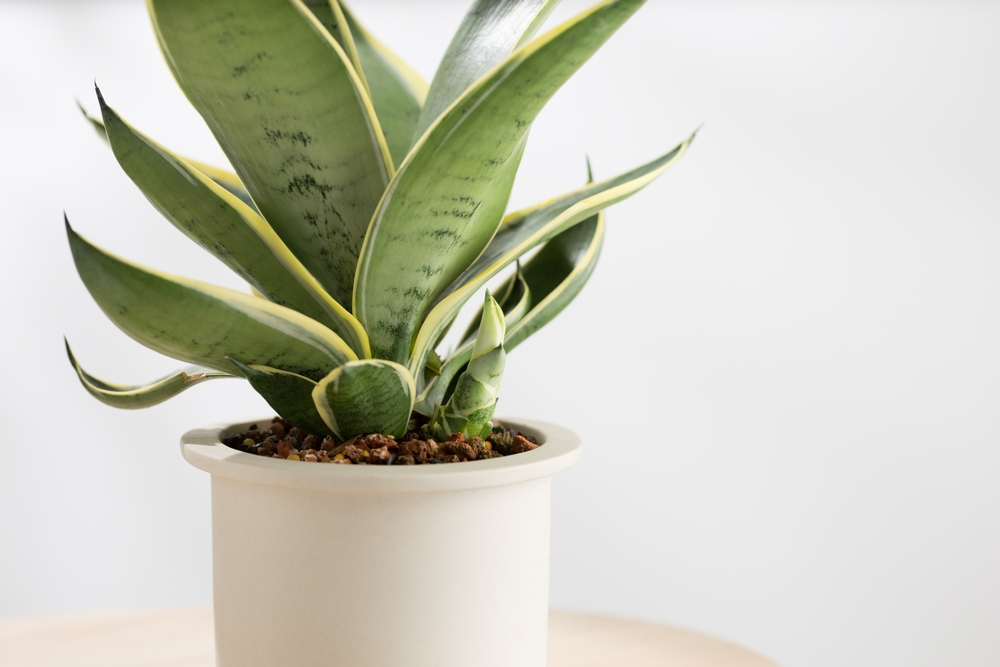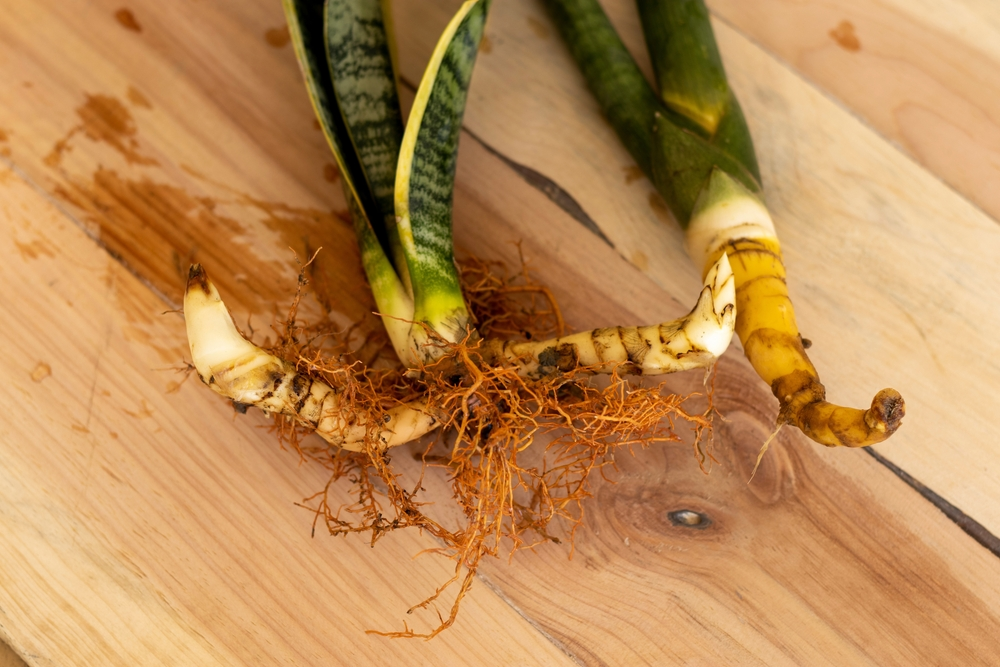HousePlantJoy is supported by our audience. When you purchase through one of our links, we may earn a small affiliate commission. As an Amazon Associate I earn from qualifying purchases. Your cost is not affected.
==================
Looking for a great plant to practicing plant propagation? Snake plants might offer just that skill. In fact, propagating snake plants to make new snake plants is quite simple. You just need to know the basics.
Propagating Snake Plants
As an enthusiastic indoor gardener, I have always been fascinated by the resilience and adaptability of snake plants. Also known as Sansevieria or mother-in-law’s tongue, these plants are popular for their air-purifying qualities and low maintenance needs.
However, the true charm of snake plants lies in their ability to propagate. Propagating snake plants is an art that, once mastered, can lead to a rewarding gardening experience.
Propagate Snake Plants from the Mother Plant
The beauty of propagating snake plants is that it’s a simple process but requires a delicate touch and a keen eye. Snake plants propagate through division, leaf cuttings, and rhizome cuttings. This guide will walk you through the process of propagating snake plants, ensuring you can easily grow and nurture these stunning houseplants.
Connect With Nature As You Propagate Snake Plants
This journey of propagation not only helps in expanding your indoor garden but also deepens your connection with nature. The joy of watching a tiny leaf cutting grow into a full plant is immeasurable. So, without further ado, let’s dive deep into the world of snake plant propagation.
Why Propagate A Snake Plant?
You might wonder why you should bother propagating a snake plant when you can easily buy a new one. Well, growing your plants has a particular joy and sense of accomplishment. Propagating a snake plant allows you to multiply your collection without spending extra money. It’s also a great way to share your love for these plants with friends and family by gifting them a plant you’ve nurtured.
Health Benefits of Snake Plant
Snake plants are also known for their air-purifying qualities. They absorb toxins and release oxygen, improving the air quality in your home. By propagating snake plants, you can ensure that every room in your house benefits from their air-cleaning properties.
Propagate Snake Plants as a Hobby
Moreover, the process of propagation can be therapeutic. It requires patience and care, and in return, it offers the rewarding sight of new growth. It’s a relaxing hobby that allows you to disconnect from your daily stresses and connect with nature.
All Ages
People of all ages enjoy creating new plant babies. Young children find great pleasure in watching their new snake plants grow. And we’ve seen older adults discover a new joy when propagating snake plants and other types.
Nature’s Beauty
Watching new leaf growth provides a sense of connection with nature. And these new plants make great gifts to share with family and friends.
Understanding the Snake Plant: Pups, Cuttings, and Offshoots
Before we dive into the process of propagation, it’s essential to understand the anatomy of a snake plant. Snake plant cuttings, pups, and offshoots are the primary sources of new plant growth. Snake plant cuttings are leaf sections that are planted to sprout new roots. Pups are the baby plants that grow around the base of the parent plant, and offshoots are new growths that sprout from the underground rhizomes.
Snake Plant Cuttings
Each of these has its unique characteristics and offers a different approach to propagation. Cuttings are the most straightforward method, requiring you to simply cut a leaf and plant it.
Pups to New Plants
Pup propagation, on the other hand, involves separating the pup from the mother plant and planting it separately. Offshoots are a bit more complicated, requiring careful extraction from the parent plant. But they often show strong root structures. I find them as hardy as the large plants.
Regardless of your chosen method, understanding these different parts of the plant is crucial to successful propagation. It helps you identify the best approach and ensures you treat each part with the care it needs.
How to Cut Snake Plant for Propagation
The process of cutting a snake plant for propagation is a delicate task that requires precision and care.
The first step is to select a healthy, mature leaf. Make sure it’s free from any signs of disease or pests. A healthy leaf ensures a higher success rate for propagation. This is not the time to try using a leaf that seems limp or weak.
Next, using a sterile knife or pair of scissors, make a clean cut at the base of the leaf. It’s important to sterilize your cutting tool to prevent the spread of disease.
Waiting Time
After cutting the leaf, let it dry for a few days before planting. This allows the cut end to heal and reduces the risk of rot. Patience is key here. Give it time to truly heal.
When cutting the leaf, remember to note its orientation. Snake plants are polar, meaning they have an up-and-down direction. The cuttings must be planted in the same direction they were growing to ensure successful rooting.
To ensure this, we set them on a sheet of paper and note the direction on the paper. I know some people choose to use a non-toxic marker to mark the direction. Whichever you choose, make sure your mother-in-law’s tongue plant babies are in the right direction when planted.
How to Propagate Snake Plant Cuttings
Once you’ve prepared your leaf cuttings, the next step is to plant them. You can either plant them in soil or water. For soil propagation, choose a well-draining potting mix. Stick the cut end of the leaf about an inch deep into the soil and water it lightly. The soil should be damp but not waterlogged.
For water propagation, place the cut end of the leaf in a jar of water. Make sure only the cut end is submerged, not the entire leaf. Change the water every few days to prevent rot.
Both Methods Have Their Pros and Cons
Soil propagation is more natural and allows the plant to adapt to its growing environment from the start. However, water propagation lets you see the roots as they grow, which is quite satisfying.
Children often prefer the water propagation process as it allows them to watch it. Honestly, it’s my preferred method, too. The soil method takes a bit less work overall. But seeing the plant grow roots gives me a clear picture of when my rooted cuttings are ready to transfer.
Growing A Large Snake Plant: Tips and Tricks
Growing a large snake plant requires patience and care. Start with choosing a large, healthy leaf for propagation. Make sure the pot you choose is big enough to accommodate the mature plant. Snake plants prefer tight quarters, but they still need room to grow.
Ensure your snake plant gets plenty of indirect sunlight. While they tolerate low light, they thrive in bright, indirect light. However, they are not fond of being in the direct sunlight.
Water Sparingly
Water your snake plant sparingly. They are drought-tolerant and overwatering can lead to root rot. Allow the soil to dry out completely between waterings.
Feed your snake plant with a balanced, slow-release fertilizer during the growing season. This provides the nutrients it needs to grow large and healthy. Lastly, be patient. Snake plants are slow growers, but they can reach impressive sizes with time and care.
How to Root a Snake Plant: A Step-by-Step Guide
Rooting a snake plant is a rewarding process. Here’s a step-by-step guide to help you through it:
- Start by cutting a healthy leaf from the parent plant. Allow the cut end to dry for a few days.
- Once the cut end has healed, plant it in a well-draining potting mix or place it in water. If planting in soil, make sure the soil is damp, not waterlogged. If using water, change it every few days.
- Place your cutting in a bright, warm location. Avoid direct sunlight as it can scorch the leaf.
- Be patient. Rooting can take anywhere from 2 to 8 weeks. Don’t tug on the cutting to check for roots; this can damage the new growth.
- Once you see new growth, you can repot your cutting in a larger pot if necessary. Continue caring for it as you would a mature snake plant.
How to Propagate Snake Plant Pups
Snake plant pups are the baby plants that grow at the base of the parent plant. To propagate snake plant pups, carefully separate them from the mother plant. You can do this by gently pulling them apart from the mother plants, making sure each pup has some roots attached.
Once you’ve separated the pups, check the root ball. If it’s large enough, plant them in a well-draining potting mix. Make sure the pot is large enough to accommodate the pup’s growth.
New Roots
Often, the tiny roots of plant pups need more time to grow before they are ready to plant. For these, I like to put them in water to continue growing their roots before planting. However, you can plant them in the same type of soil that the mother plant lives in. Usually, these young plants will take root in well-draining soil.
Caring for snake plant pups is similar to caring for mature snake plants. They need bright, indirect sunlight and occasional watering. With proper care, these pups can grow into large, healthy plants.
Should You Remove Snake Plant Pups?
Whether or not you should remove snake plant pups depends on your personal preference. If you want to propagate new plants, then yes, removing pups is a great way to do this. However, if you prefer to let your snake plant grow naturally, you can leave the pups in place.
Leaving pups attached allows them to grow and contribute to the overall size and appearance of the parent plant. On the other hand, removing pups reduces the strain on the parent plant and gives you new plants to nurture and grow.
Mother Plant Management
Hardy plants can manage growing with young plants attached. If they grow too large for the container, transplant the entire plant into a larger pot. Or separate the roots and plant both sections, using a well-draining soil.
It’s important to remember that if you choose to remove snake plant pups, do so carefully to avoid damaging the pups or the parent plant.
Caring for Your Propagated Snake Plant
After you’ve successfully propagated your snake plant, the next step is to care for it. Snake plants are hardy and low-maintenance, but they still need some care to thrive.
Medium Light Location
Place your propagated snake plant in a location with bright, indirect sunlight. Water it sparingly; snake plants are more likely to suffer from overwatering than underwatering. Allow the soil to dry out completely before watering again.
Feed your snake plant with a balanced, slow-release fertilizer during the growing season. This helps it grow strong and healthy. Lastly, be patient. Snake plants are slow growers, but they can become a beautiful addition to your indoor garden with time and care.
Troubleshooting Common Issues in Snake Plant Propagation
While propagating snake plants is generally straightforward, you might encounter some issues. One common problem is rot, which often results from overwatering or planting in a pot without proper drainage. If you notice rot, remove the affected parts and let the plant dry out before replanting.
Another common issue is the lack of root growth. This is usually a result of insufficient light or improper watering. Make sure your plant is receiving bright, indirect sunlight and that you’re not over or underwatering it.
Nurturing as They Develop Roots
If your snake plant cuttings or pups aren’t showing any signs of growth, it could be due to stress or shock. Give them some time to adjust to their new environment. Remember, patience is key when it comes to plant propagation.
Multiplying Indoor Plants
Mastering the art of propagating snake plants takes time and patience, but the reward of seeing a tiny cutting grow into a full plant is well worth the effort. Whether you’re a seasoned gardener or a beginner, this guide provides all the information you need to propagate snake plants successfully. So go ahead and give it a try. You might be surprised at how satisfying and enjoyable the process can be.
Remember, every plant you propagate brings you one step closer to having an indoor jungle. So keep propagating, keep growing, and most importantly, keep enjoying the beautiful world of indoor gardening.
FAQs
How Do I Start Propagating My Snake Plant?
No worries, it’s super easy! You can begin by selecting a healthy leaf from your snake plant. Cut it into sections, let them callous over for a couple of days, and then pop them into soil or water. With a bit of patience, you’ll start to see new roots and leaves sprouting. Voila! More snake plants!
How Long Does It Take For a Snake Plant to Grow Roots?
Patience is the key, my friend! Typically, it takes about 4-6 weeks for the roots to start appearing. Make sure to provide them with a bit of indirect light and avoid over-watering. In no time, you’ll have baby snake plants ready to be potted!
Can I Propagate Snake Plants in Water?
Absolutely! Just place the cut leaf sections in a jar with enough water to cover the bottom part of the cuts. Change the water every few weeks and wait for roots to grow. It’s as simple as pie, and a fun way to watch the magic happen!
Learn More About Propagating Houseplants!
Discover the various ways of propagating different houseplants like the spider plant! Join us on Facebook, Instagram, and Twitter for beautiful photos, plant care tips, and a community that celebrates the joy of indoor gardening.
Facebook: https://www.facebook.com/houseplantjoyblog
Instagram: http://instagram.com/houseplantjoy20
Twitter: https://twitter.com/HouseplantJoy
Let’s nurture our green spaces together!
Read More
More Interesting Links

